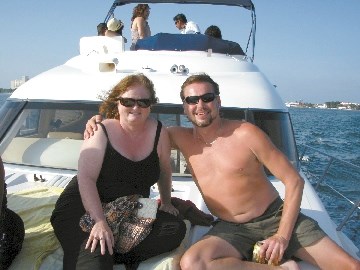The motto of the Battlefords Publishing newsroom is "Everybody has a story."
My husband and I recently returned from Mexico (we've been stay-cationing for the last 25 years and thought it was time to leave the country), and the motto holds true there just as surely as it does anywhere else. In fact, it can just as easily be read as "Every place has a story."
Having declared 2011 the Year of Tourism in Mexico, President Felipe Calderón is urging all Mexicans to unite to strengthen the tourist sector, which is a national and public policy priority for his government.
With up to 47 per cent of the population living below the poverty line, increased tourism is one way to create new economic opportunities for its citizens.
President Calderón's aim is to turn Mexico into one of the world's five main tourist destinations by 2018.
In recent years, Mexico has been hanging on to 10th place, with France, the United States, Spain and China being the most visited, usually in that order.
Part of the campaign to move to the top five is to assure tourists Mexico, or at least parts of Mexico, are not as dangerous as some fellow North American residents would have travellers believe.
The head of Mexico's state-run tourism board felt compelled to meet with Texas officials recently to try to prevent bulletins such as one released in March, when the Texas Department of Public Safety bluntly told vacationers, "Avoid traveling to Mexico during Spring Break and stay alive."
In addition to promoting tourism, President Calderón has made combating organized crime a priority. The northern states of the country are primarily at issue, where drug wars spawn violence.
But the central vacation areas and the oceanside resorts are another story. It's these destinations that Mexico is betting on for significant tourism dollars.
In our first visit to Mexico, my husband and I stayed 10 delightful days at Hacienda Tres Rios, about 40 miles south of tourist hotspot Cancun, on the Gulf coast.
We felt as safe, perhaps safer, as we would have at home. Security was tight on our resort.
It was a relaxing and enjoyable all-inclusive Riviera Maya experience. The Mexican staff were friendly, attentive and some of the hardest workers we'd ever seen, especially considering minimum wage in Mexico is less than $6 CAD a day.
We were happy to tip; a small thing for us, much more for them.
But it wasn't all about great service and safety. We were also impressed by the fact that the developers are committed to achieving an environmentally sustainable resort through the intelligent and responsible use of the area's ecosystems and natural resources.
In 2006, the Tres Rios project was recognized by the Mexican government as a "regional and national model for sustainable tourism development." (In fact, the president attended the hotel's inaugural ceremony.) In 2010, it was named Mexico's Leading All-inclusive Resort and Leading Green Hotel in Mexico and Central America by the World Travel Awards. These are actually just a few of its awards.
The hotel is the first of three planned for the Tres Rios development. Of its 326 acres of land, 150 acres comprise a nature preserve. There are 90 animal species, 120 plant species and 10 cenotes (sinkholes that bring underground water to the surface) on the property. Within that area, over 50,000 plants have been reforested in six acres of forests previously impacted by hurricanes.
Water is all important on the Yucatan Peninsula. Tres Rios is named for the three rivers that flow through the mangrove trees.
The mangrove forest is a vital part of the area's ecosystem. The Yucatan's four mangrove species anchor the soil, and protect and nurture wildlife.
Where the three rivers empty into the Gulf, the beaches are favourable for the growth of turtle grass, leading some travellers to comment that the beach isn't nice and white like other areas, but my husband and I decided live turtle grass was preferable to a toxic environment (it's suggested some beaches have been rid of the vegetation that annoys swimmers by using poison). Turtle grass beds serve as both habitat and food source for marine animals, including sea turtles.
Instead of trying to get rid of the turtle grass, a breakwater built out into the gulf is being used as a natural way to build the beach, by capturing sand washed in by waves and by tropical storms.
In order to protect the flow of the natural aquifers of the area, the resort is built over 400 pilings, 2.8 meters above ground. Cold water from deep wells is used to cool air conditioning systems, the heat generated from air conditioning is captured to heat water, in-room sensors shut down unnecessary use when rooms are unoccupied, and a titanium-clad water desalination plant treats and filters the water, avoiding use of the freshwater aquifer (and we could drink the tap water!)
There was a time when I had no desire to visit Mexico. I felt it would be hypocritical to revel in luxury while all around you was poverty. (And, of course, it's really, really hot!)
But I've changed my tune. In these global times, one person's guilty pleasure is another person's livelihood.
And we will definitely be making another contribution to Mexico's economy as soon as possible.
Hmmm... the weather is starting to cool, isn't it?

.png;w=120;h=80;mode=crop)


